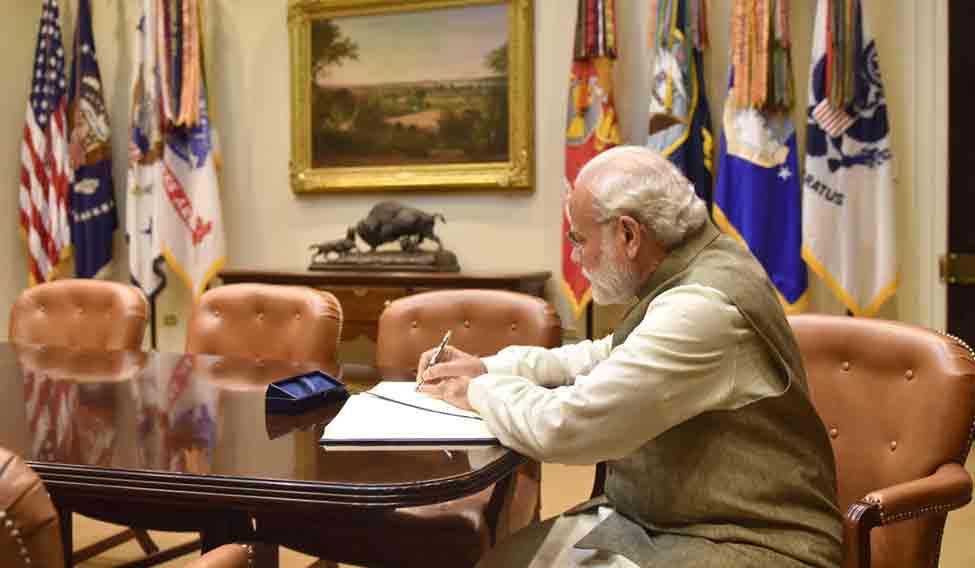The members of the Missile Technology Control Regime, an international anti-proliferation grouping, have agreed to admit India, diplomats said, in a win for Prime Minister Narendra Modi as he met US President Barack Obama in Washington on Tuesday.
Diplomats with direct knowledge of the matter said a deadline for members of the 34-nation group to object to India's admission had expired on Monday without any raising objections.
Under this 'silent procedure', India's admission follows automatically, diplomats from four MTCR member nations told Reuters on condition of anonymity.
Obama was expected to say he was looking forward to India's "imminent entry" into the MTCR when he and Modi address the press after their seventh bilateral meeting, sources aware of its agenda said.
Admission to the MTCR would open the way for India to buy high-end missile technology, also making more realistic its aspiration to buy surveillance drones such as the Predator, made by General Atomics.
Arms exporter
India makes a supersonic cruise missile, the Brahmos, in a joint venture with Russia that both countries hope to sell to third countries, a development that would make India a significant arms exporter for the first time.
Membership of the MTCR would require India to comply with rules such as a maximum missile range of 300 km (186 miles) that seek to prevent arms races from developing.
Italy had objected to admitting India but, after an unrelated bilateral dispute was resolved, did not object this time within a 10-day deadline after the group's chair, the Netherlands, wrote to members suggesting India be welcomed.
An Italian marine, held for four years at the country's embassy in New Delhi over the killing of two Indian fishermen in an anti-piracy operation in 2012, was recently allowed to return home.
A US congressional source confirmed that India's membership in the missile control group was expected, as Modi visited Washington. "In my mind, the hurdle was the Italian veto over the Indian arrest of the Italian marine. Now that the marine has been released, I think it appears that yes, admission will be granted," he said.
No formal meeting is required for India to complete its entry into the group, set up in 1987 to limit the spread of unmanned systems capable of delivering weapons of mass destruction.
The MTCR is one of four international non-proliferation regimes that India, which in recent decades has gone from being a non-aligned outsider to a rising nuclear-weapons power, has been excluded from.
New Delhi has also applied to join the Nuclear Suppliers Group (NSG), a 48-nation club that governs trade in commercial nuclear technology and was originally set up in response to India's first atomic weapons test in 1974.
Joining the NSG will be much more difficult because China is a member and has backed the membership aspirations of Pakistan, its ally and India's arch-rival.
Still, the breakthrough on the MTCR will be welcomed in the US Congress, which Modi will address on Wednesday. Congress ratified a civilian nuclear agreement with India in 2008 that seeks to build commercial ties, while at the same time binding New Delhi into the global security order.
Ahead of the summit, US-based nuclear reactor maker Westinghouse, a unit of Japan's Toshiba Corp, has made progress towards a deal to build six reactors in India's southern state of Andhra Pradesh. A deal, if completed, would be the first to stem from the civil nuclear accord.





